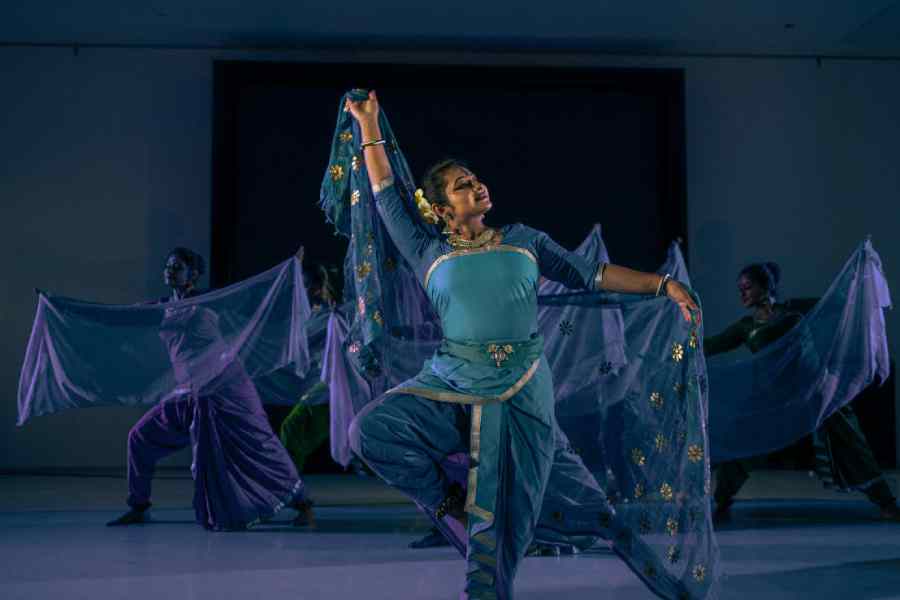Rabindra Nritya, the dance form created by Tagore, was a trailblazer in several aspects. Defying the constraints of formulaic choreography and classical codes, Rabindra Nritya shifted the focus from stylised expressions to naturalistic articulation, thereby creating an idiom that is both liberating and modern. Following in Tagore’s footsteps, Manjusri Chaki Sircar conceptualised Nava Nritya several decades later, borrowing the ideological and the aesthetic principles of Rabindra Nritya but creating new, experimentative movements that retained the classical flavour. Shraban Sandhya by Sircar’s Dancer’s Guild thus bore the imprint of the interaction between these two genres, foregrounding their similitudes as well as departures.
Presented at the Kolkata Centre for Creativity, Shraban Sandhya was, at its core, a celebration of monsoon through dance performed to Tagore’s poems and songs. Adorned in blue attires, the dancers at the inaugural recital etched out Taore’s poetic reflections from a unique blend of the poem, “Badal diner prothom kadam phool”, and the song, “Oi ashe oi oti bhairabo”. A lesson in contemporaneity, Jonaki Sarkar’s choreography attempted to capture the moods and the moments evoked by the monsoon. Nostalgia, romance, pain and ecstasy, a kaleidoscope of emotions, were highlighted through spontaneous movements and the clever use of fabrics in “Biswa bina rabe”, “Timir abagunthane” and “Adhar o ambare prachande”. While “Nil anjane ghana punja chayay” exhibited the juxtaposition of love and spirituality in tranquil settings, “Shaon gagane” explored the episode of the love-lorn Radha braving the thundering storm to meet Krishna in the woods. Other recitals, including “Mor bhabanare ki haway matalo” and “Amon dine tare bola jay”, elucidated both the elation and the trepidation associated with the monsoon.
Manjusri Chaki Sircar’s Tomari Matir Kanya (1987) — adapted from Chandalika — departed from Tagore’s vision by incorporating a unique feminist consciousness. Similarly, Shraban Sandhya presented Tagore songs to dramatic gestural movements in contrast to the soft and gentle postures of Rabindra Nritya.











